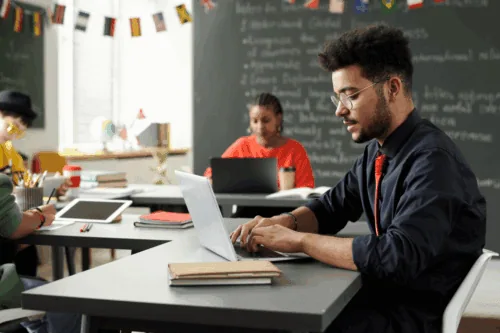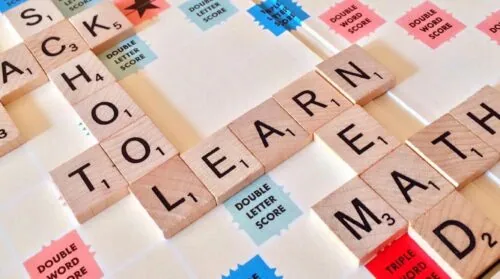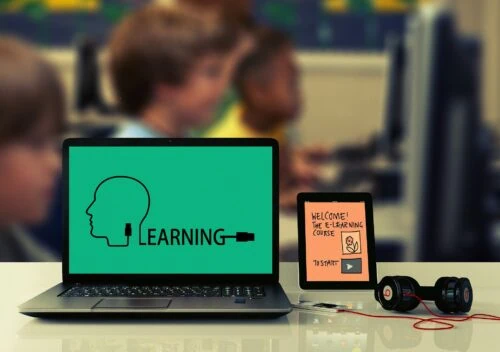Introduction
Welcome to this comprehensive guide on disability rights in education. This resource is designed to assist educators and advocates in understanding the vital importance of inclusivity and equal opportunities within educational environments. Here, we explore the evolution, current challenges, and future prospects of integrating and respecting disability rights in the school systems.
The Importance of Disability Rights in Education
Ensuring the protection and advancement of disability rights in education is more than a legal obligation—it’s a fundamental element of social justice. Education not only empowers individuals with disabilities but also enriches the educational experience for all students by fostering an environment of diversity and inclusion.
Key Benefits
Here are several crucial benefits of upholding disability rights within educational systems:
- Inclusive Education: Supports the integration of students with disabilities into mainstream classrooms, which promotes an inclusive society.
- Equal Opportunities: Ensures that students with disabilities receive equal access to educational resources, enabling them to compete fairly with their peers.
- Social Integration: Encourages understanding and acceptance amongst peers, which can reduce stigma and discrimination.
Reinforcing Social Equality
Advocacy for disability rights in education not only addresses accessibility but also pushes for systemic reforms that ensure every student has the potential to succeed. Programs tailored to diverse learning needs demonstrate the practical implementation of these rights.
For an in-depth look at specific legal frameworks that protect these rights, consider exploring resources offered by esteemed institutions like the U.S. Department of Education’s Office for Civil Rights, which provides guidelines and support for enforcing disability rights in educational settings.
Promoting and enforcing disability rights in education helps dismantle barriers and constructs a foundation for comprehensive and equitable educational experiences for all students. To understand how these principles have been historically anchored, the next section will explore the historical context of disability rights in education.
Historical Context of Disability Rights in Education
The journey toward achieving ideal disability rights in education has been shaped by evolving perceptions and legislation. Historically, students with disabilities often faced significant exclusion from mainstream educational opportunities. This marginalization sparked critical advocacy movements aiming to change societal and legal perspectives toward disability.
Legislation Landmarks
Several key pieces of legislation have fundamentally altered the landscape of educational rights for individuals with disabilities:
- The Education for All Handicapped Children Act (1975): This act, now known as the Individuals with Disabilities Education Act (IDEA), guaranteed free and appropriate public education to each child with a disability in every state.
- Americans with Disabilities Act (ADA) of 1990: This broad civil rights law prohibited, among other things, discrimination based on disability in schools, bolstering the legal rights established under IDEA.
- Section 504 of the Rehabilitation Act of 1973: Offered earlier protections by prohibiting disability discrimination by any program receiving federal funding.
Impact of These Laws
These laws not only mandate access but also require institutions to provide necessary accommodations, such as specialized services and modifications to curricula and teaching methods. This legal backing is critical in promoting inclusivity and accessibility in education, ensuring that schools commit to offering equitable educational experiences to all students.
Through these legislative acts, schools must actively remove barriers that could prevent students with disabilities from receiving an equal education. This commitment is crucial for fostering an academic environment where every student can thrive. Our next section will explore how inclusivity further enhances educational settings.
Advocacy and Awareness
Early activists and educators played a pivotal role in bringing the challenges faced by students with disabilities to the forefront of human rights discourse. Their persistent efforts paved the way for the all-inclusive educational policies we strive to implement today. Websites like Office of Special Education Programs provide insights into ongoing governmental efforts to support educational rights.
A continuum of advocacy and progressive policy-making has promoted integrating students with disabilities into general education settings, where they can equally participate and benefit from shared educational experiences. This historical perspective sets the stage for discussing the current challenges in upholding and extending these fundamental rights.
Current Challenges for Disability Rights in Education
Despite significant progress, numerous challenges continue to hinder the full realization of disability rights in education. Addressing these barriers is essential for advancing educational equity.
Accessibility Issues
Many educational institutions still lack adequate facilities for students with disabilities. Essential features like ramps, lifts, and tailored restrooms are often missing or insufficient.
Technological Gaps
Furthermore, there is a pressing need for adaptive technology that supports learning for all students. While strides have been made, consistent access and training lag behind.
Educational Materials
Curricular materials, including braille, large print, and audiobooks, are not always available in formats accessible to all learners.
Teacher Training
Without proper training, teachers may struggle to include all students effectively. Professional development in special education is crucial yet not universally implemented.
Budget Constraints
Schools often face financial limits. These restrictions impact the availability of resources crucial for supporting diverse learning needs.
Moreover, awareness and understanding of disability issues within educational frameworks remain inconsistent. Transitioning to solutions, it’s vital to consider how law and policy support disability rights in education. Therefore, our next section will delve into key legislation that has shaped these rights.
Impact of Inclusion in Educational Settings
Inclusion not only upholds disability rights in education but significantly enhances the quality of education of all students.
Broad Benefits
Inclusive education systems offer numerous advantages:
- Enhanced Social Skills: Students interact with diverse abilities, fostering better social understanding and empathy.
- Improved Learning Outcomes: Collaborative learning environments allow students to teach and learn from one another, leveraging their unique strengths.
- Reduced Stigmatization: Regular interaction demystifies disabilities, reducing prejudice and promoting acceptance.
Supporting Research
Studies suggest that inclusive education can lead to higher academic achievement for all students. Additionally, students demonstrate better social integration and communication skills.
Educators play a crucial role in facilitating this effect; however, their success depends on proper training and support. Resources like the U.S. Department of Education’s Protecting Students with Disabilities provide valuable guidelines that help schools implement effective inclusion practices. Also, partnerships with organizations like Wrightslaw, specializing in special education law and advocacy, offer essential tools for educators and parents alike.
Inclusion not only complies with legal mandates but enriches the school experience for everyone involved. As we will explore in the following section, continuously addressing and integrating new accessibility technologies plays a huge part in this ongoing process.
Technological Advancements and Accessibility
Technology plays a pivotal role in enriching educational experiences for students with disabilities, and it strongly supports disability rights in education.
Innovative Tools
Advancements include:
- Assistive Technology: Devices like screen readers and speech-to-text software facilitate access to the curriculum for those with vision or hearing impairments.
- Adaptive Learning Software: Customizable platforms adapt to individual learning styles and needs, providing personalized educational experiences.
- Communication Technology: Tools that enhance communication for non-verbal students or those with speech impairments.
Implementing Technology in Schools
Adoption of these technologies in educational settings is crucial. Schools must ensure that these tools are effectively integrated into their daily operations and teaching strategies to maximize their benefits.
Moreover, the ongoing development and refinement of these technologies are essential. This ensures they remain up-to-date with the rapid pace of digital innovation. Training for educators is also crucial, enabling them to utilize these tools effectively to support all students.
As technology evolves, it will play an increasingly important role in removing barriers and enhancing learning for students with disabilities.
Strategies for Advocating for Disability Rights in Education
Effective advocacy for disability rights in education ensures sustained progress and empowers disabled students.
Engaging with Stakeholders
Collaboration with educators, families, and policymakers is crucial. Together, they can develop robust strategies to support inclusion and accessibility.
Utilizing Legal Frameworks
Understanding and leveraging existing laws helps advocate for necessary changes or enhancements in educational policies.
Raising Awareness
Organizing workshops and seminars can inform and educate school staff and the wider community about the importance of disability rights in education.
Empowering the Community
Support networks for parents and guardians of students with disabilities provide resources and a platform for shared experiences and advocacy.
Promoting positive narratives around disability and education helps shift public perception and fosters a more inclusive society. This requires persistent efforts and dedication.
FAQs
What are disability rights in education?
Disability rights in education ensure that students with disabilities have equal access to educational opportunities, including the necessary accommodations to support their learning.
Why is inclusion important in schools?
Inclusion promotes diversity and teaches all students valuable social skills. It ensures everyone has a fair chance to succeed, regardless of their abilities.
How can schools improve accessibility for students with disabilities?
Schools can enhance accessibility by upgrading facilities, integrating assistive technologies, and training staff to effectively support diverse learning needs.
What laws protect students with disabilities?
The Americans with Disabilities Act (ADA) and the Individuals with Disabilities Education Act (IDEA) are key laws that protect the rights of students with disabilities.
How can I advocate for disability rights in my school?
Become informed about the laws, collaborate with advocacy groups, and communicate with school officials to promote changes that enhance accessibility and inclusivity.
Where can I find resources to understand more about disability rights in education?
Numerous organizations and websites, including government sites like the U.S. Department of Education, provide information and support for understanding disability rights in education.
Conclusion
The journey towards fully realizing disability rights in education is ongoing. Progress has been made, yet gaps still exist that require continuous effort and dedication from all stakeholders involved. Ensuring equal opportunities for students with disabilities enhances the entire educational experience and promotes a just society.
Unlike other job search websites, Diversity Employment focuses on supporting and participating in initiatives that promote diversity and inclusion. Together, we can advocate for necessary changes, provide support where it is needed, and educate others about the importance of inclusivity in education.
We can ensure that educational institutions serve all students equally and justly through collective action and persistent advocacy. Join us in making a difference and celebrating every student’s right to an accessible and inclusive education.




